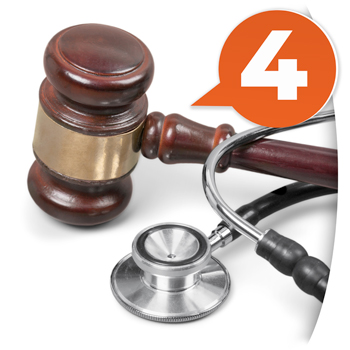
Each day, thousands of patients rely on doctors and other medical professionals to provide appropriate treatment, which could include prescribing the right medications, performing surgery or recommending tests to diagnose your medical issues.
Unfortunately, medical professionals sometimes make poor decisions and their patients suffer severe, potentially life-threatening injuries.
In these situations, victims may be able to pursue a medical malpractice claim against the medical professionals responsible for their injuries. If they are successful, they can recover compensation for medical expenses and other damages caused by their injuries.
However, a medical malpractice claim is one of the most complex types of legal action you can pursue. You have to establish four things to succeed:
- Evidence of a doctor-patient relationship – This is probably the easiest thing to prove in a medical malpractice case. You simply have to show that a medical professional agreed to treat you or diagnose your illness or that this person actually provided treatment. Once the doctor-patient relationship is established, the doctor has a duty to provide a level of care within accepted medical standards. In other words, the doctor must provide a level of care that is considered competent given the situation.
- Evidence of substandard medical care – You need to show that the doctor or medical professional did not provide treatment that fits within accepted medical standards, given the situation. You will most likely need testimony from expert witnesses to prove that the care you received fell outside of accepted medical standards. These witnesses will explain what a competent medical professional would have done if he or she were in the same situation. Expert witnesses will also explain in detail how various aspects of your treatment were substandard.
- Link between a patient’s injury and the doctor’s negligence – In addition to negligence, it must be proven that the primary cause of your injuries was your doctor’s actions or lack thereof. The key here is to show that your injuries were not caused by an underlying medical condition or something outside of the doctor's control.
- Proof of damages – You need to detail the damages you suffered because of your injuries, which could include medical treatment, lost wages, and pain and suffering.
You need to prove these four things by a preponderance of evidence. In other words, you have to provide enough evidence to show that your allegations are more likely true than not.
It is much easier to meet this standard than the legal standard in other types of cases. However, medical malpractice cases are still complicated, and you will need an experienced medical malpractice attorney to have the best chance of obtaining all of the compensation you deserve.
An attorney can help you determine if you have a case and manage every aspect of your claim, including filing a certificate of merit and getting your claim past a medical malpractice review board if your state has one.
The medical malpractice attorneys at Janet, Janet & Suggs, LLC take cases from all over the nation with court approval. We have recovered millions in compensation for victims of medical malpractice.
Managing principal Howard A. Janet has been nationally recognized for his work on medical malpractice cases. On two occasions, he broke the record for the largest jury award in a Minnesota medical malpractice claim.
Contact our office today for a free legal consultation to review your claim. Call 1-877-692-3862.
RELATED POSTS
Our Lawyers Don’t Stop Fighting for Your Medical Malpractice Settlement Until Justice Is Served
